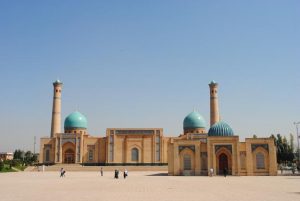In Sanskrit word, Bukhara signifies “monastery” and this city was once a large commercial center on the Great Silk Road.
Bukhara was first mentioned in Chinese chronicles in the early 5th century. It is one of the oldest trade and cultural centers in Central Asia. The city itself was founded by Persian Prince who built a citadel there after he had married to Afrosiab’s daughter in Samarkand. But the growth of the city mostly depended on its strategic location. It is situated on the crossroads leading to the main important centers of Asia. The history of this city is very astonishing. Bukhara oasis of Soghdiana was conquered by Alexander the Great, also it was once ruled by the Kushan empire and later became a part of the Hephthalites Reign. When the Arabs arrived they found already prosperous trading center. It was the capital of Samanid State during the 9-10th centuries. During that period Bukhara – “the Pillar of Islam” became Central Asia’s religious and cultural heart, brightened with the Persian love of arts. In 1220 Bukhara was conquered by Genghiz-Khan and in 1370 it fell under the protection of Timur’s Samarkand.
Bukhara attained its greatest importance in the late 16th century, when the Shaybanids’ possessions included most of present-day Central Asia as well as northern Persia and Afghanistan. The emir Mohammed Rahim freed himself from Persian vassalage in the mid-18th century and founded the Mangit dynasty. In 1868 the khanate was made a Russian protectorate, and in 1920 the emir was overthrown by Red Army troops. Bukhara remained the capital of the Bukharian People’s of Soviet Republic, which replaced the khanate, until the republic was absorbed into the Uzbek S.S.R. in 1924. It remained the capital when Uzbekistan gained its independence in 1991. The city grew rapidly after the discovery in the late 1950s of natural gas nearby.
In Central Asia this city has always been referred to as “Bukhara the noble”. The old town with its narrow streets, ancient buildings and dominating massive walls of the Ark fortress still retains the atmosphere of a medieval city.
The old town still retains much of its former aspect, with its mosques, madrassahs (Muslim theological schools), flat-roofed houses of sun-dried bricks, and remains of covered bazaars.

